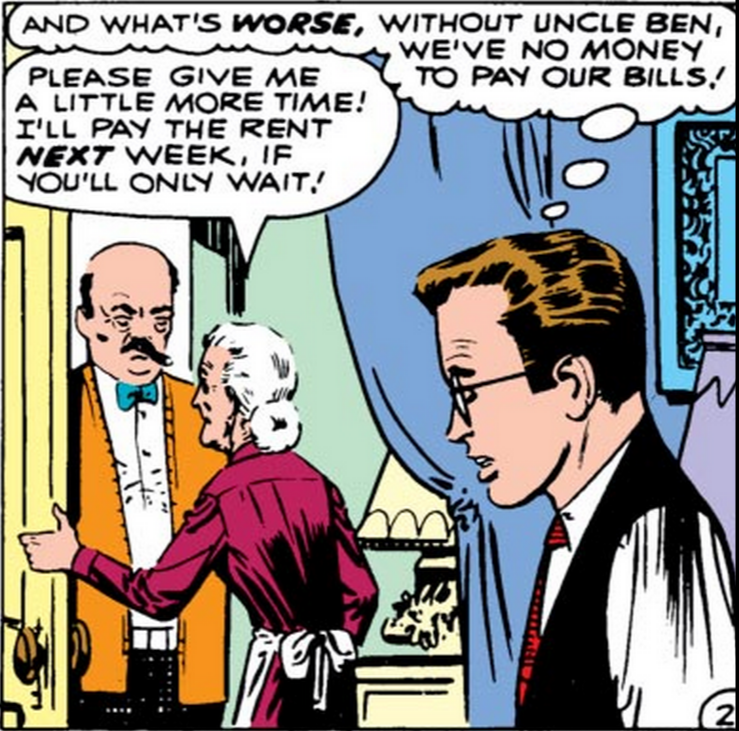 In the first issue of The Amazing Spider-Man comic, Peter Parker realizes he needs to get a job now that Uncle Ben and his income is gone. He tries doing performances as Spider-Man, getting part-time jobs, and joining the Fantastic Four, but nothing works — and no thanks to J. Jonah Jameson’s unabashed slander of the webbed hero. Even after Spider-Man saves Jameson’s astronaut son from crashing his rocket, Jameson publishes that it was all Spider-Man’s fault in the first place.
In the first issue of The Amazing Spider-Man comic, Peter Parker realizes he needs to get a job now that Uncle Ben and his income is gone. He tries doing performances as Spider-Man, getting part-time jobs, and joining the Fantastic Four, but nothing works — and no thanks to J. Jonah Jameson’s unabashed slander of the webbed hero. Even after Spider-Man saves Jameson’s astronaut son from crashing his rocket, Jameson publishes that it was all Spider-Man’s fault in the first place.
Spider-Man comes up against his first villain, Chameleon, who is a master at disguising himself as other people and decides to use Spider-Man’s growing infamy to steal missile documents and blame it on Spider-Man. He manages to expose Chameleon, but the general public still sees Spider-Man as a public menace. The issue ends with the Fantastic Four worrying that Peter might use his powers for evil and Peter bemoaning the hatred Spider-Man still gets from the public despite all the good he does.
As we’ve discussed in class, these comics give a very human element to the heroes, and Spider-Man is no different. The first half of the issue is almost exclusively concerns Peter Parker trying to find ways to raise money so that he and Aunt May can get by. The above panel exemplifies Peter’s human fear and concern for his family, and the rest of the issue focuses on him trying to solve that issue. His number one priority is not heroism but protecting his family, a theme that most readers can relate to.
